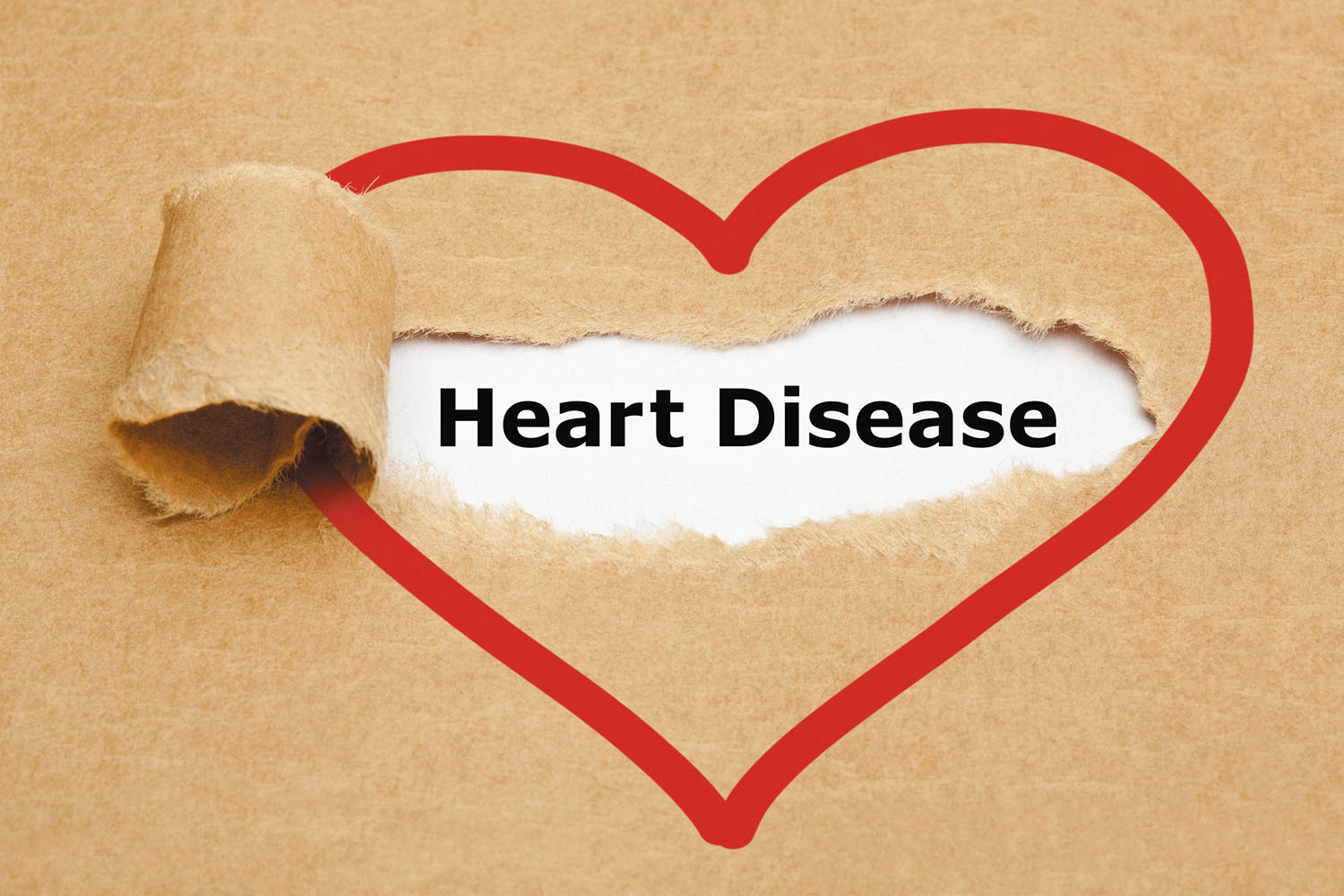
Counting steps is good — is combining steps and heart rate better?

Appendix pain: Could it be appendicitis?

Can saw palmetto treat an enlarged prostate?

How does Ozempic work? Understanding GLP-1s for diabetes, weight loss, and beyond

Zinc: What it does for the body, and the best food sources

Respiratory health harms often follow flooding: Taking these steps can help

Tips to leverage neuroplasticity to maintain cognitive fitness as you age

Can white noise really help you sleep better?

Celiac disease: Exploring four myths

What is prostatitis and how is it treated?
Heart Health Archive
Articles
Time-sensitive clues about cardiovascular risk
Why do heart attack rates rise on Monday mornings and the week after daylight savings time begins?
Deep inside your brain is a small cluster of cells that serves as your body's master clock. These cells govern your circadian rhythm, the 24-hour internal clock that keeps your body in sync with the day-night cycle. But nearly all your cells also have their own clocks to ensure that each one performs its unique role — such as producing proteins or releasing hormones — at the right time.
These biological timekeepers are under genetic control. But what happens if our behavior or environment is out of sync with our internal clocks? Understanding the potential health consequences of that misalignment is the focus of the Medical Chronobiology Program at Harvard-affiliated Brigham and Women's Hospital, says Dr. Frank Scheer, who directs the program.
Lessons about brain health from a landmark heart study
At 70 years and counting, the Framingham Heart Study continues to help doctors better understand stroke, dementia, and heart disease.
Image: © BHPix/Getty Images
In 1948, more than 5,200 people living in a town just west of Boston volunteered for what has evolved into the longest running and best-known study of the causes of heart disease. But the multigenerational Framingham Heart Study has also revealed important clues about brain disorders — most notably stroke but also cognitive decline and dementia (see "Framingham's brain health findings").
In the early 1960s, Framingham researchers coined the term "risk factor," which refers to a characteristic or exposure that raises a person's odds of developing a disease. Over the following decades, they uncovered many such factors for heart disease, including cigarette smoking, obesity, lack of physical activity, and high blood pressure. These habits and conditions also turned out to predispose people to stroke and dementia, thereby establishing that what harms the heart is also bad for the brain.
Why worry about your waistline?
Excess fat around your midsection is especially dangerous for your heart.
For decades, experts have warned that a big belly is more harmful to your heart than extra padding in your hips and thighs. A growing number of Americans now sport this unhealthy "apple-shaped" profile, according to the latest statistics from the CDC.
The average waist circumference for men is now 40.2 inches, up from the 39 inches recorded in the last survey, which was done in 1999–2000. Women's waist measurements also rose — from an average of 36.3 to 38.6 inches. That means that a majority of Americans now have belly sizes that put them at high risk (see "Gut check: How to measure your midsection").
Legume of the month: White beans
Image: © ALLEKO/Getty Images
All beans are rich in fiber, but the top-ranking variety is the navy bean, allegedly named for its popularity in the U.S. Navy in the early 20th century. These pea-sized, cream-colored beans provide 10 grams of fiber per half-cup serving. Most Americans are woefully deficient in dietary fiber, which helps lower harmful LDL cholesterol and is linked to a lower risk of heart disease.
Navy beans are just one of many varieties of white beans, which include cannellini, great northern, and white kidney beans. Cook's Illustrated magazine describes cannellini beans as having a "meaty, lush texture with a buttery, subtle mushroomlike flavor" whereas great northerns are "slightly chalky and mealy, with strong mineral notes." Lima and baby lima beans (also known as butter beans) are also considered white beans.
Less heart-damaging inflammation with a vegan diet?
Research we're watching
Image: © Anna_Shepulova/Getty Images
A vegan diet may help lower heart-damaging inflammation more than the diet recommended by the American Heart Association (AHA), a new study finds.
The study included 100 people with heart disease, which was defined as having at least one narrowed heart artery. Half were randomly selected to follow a vegan diet, which excludes meat, poultry, dairy, eggs, seafood, and fish. The others followed the AHA diet, which encourages lean poultry, fish, and low-fat dairy products, along with plant-based foods. All of the participants received weekly groceries, a cookbook, and sample menus. They also provided 24-hour diet recall records twice a week on random days.
Seeing clogged arteries may spur healthy lifestyle changes
Research we're watching
To encourage heart-healthy habits, a picture may be worth a thousand words, suggests a study published online Dec. 3, 2018, by The Lancet.
The study included more than 3,100 people ages 40 to 60 with at least one risk factor for heart disease. All participants received standard care to prevent heart disease, including medications (if needed) and advice about lifestyle factors. But half were given a drawing depicting the amount of plaque in their neck arteries, along with a gauge ranging from green to red to illustrate their biological age (based on their blood vessel health) compared with their actual age. Nurses called them with follow-up information, and their doctors also got the images.
More trees, fewer heart risks?
Research we're watching
Living in a leafy, green neighborhood may lead to lower levels of some telltale markers for heart disease and stroke, new research suggests.
During the five-year study, researchers collected blood and urine samples from 408 people recruited from a cardiology clinic in Louisville, Ky. The researchers also estimated green space exposure using satellite imagery that showed the vegetation density in each of the participants' neighborhoods.
A different kind of heart attack
A "type 2" heart attack caused by severely restricted blood flow can be just as serious as a heart attack caused by a sudden complete blockage.
Image: © PeopleImages/Getty Images
In TV shows and movies, a man having a heart attack typically clutches his chest and falls to the ground, but most heart attacks are not nearly as dramatic.
"No two heart attacks are the same, nor do they strike in similar fashion," says Dr. Krishna Aragam, a cardiologist with Harvard-affiliated Massachusetts General Hospital. "Some heart attacks are subtler in their warnings, but can be just as serious and even deadly if they are not attended to."
Does your Achilles tendon offer clues to your heart health?
Research we're watching
Image: © pashapixel/Getty Images
A tendon that stretches between your heel and your calf may tell you something about your cardiovascular health. Researchers found that people with thicker Achilles tendons have more significant coronary artery disease and are at higher risk for a heart attack than those with thinner tendons.
The study, which was presented in November 2018 at the American Heart Association's Scientific Sessions meeting in Chicago, found that people with thicker Achilles tendons were more likely to have a blocked heart artery and left main coronary artery disease, which is associated with a high risk of heart disease and death. It's unclear, however, exactly why this artery was thicker in these individuals.

Counting steps is good — is combining steps and heart rate better?

Appendix pain: Could it be appendicitis?

Can saw palmetto treat an enlarged prostate?

How does Ozempic work? Understanding GLP-1s for diabetes, weight loss, and beyond

Zinc: What it does for the body, and the best food sources

Respiratory health harms often follow flooding: Taking these steps can help

Tips to leverage neuroplasticity to maintain cognitive fitness as you age

Can white noise really help you sleep better?

Celiac disease: Exploring four myths

What is prostatitis and how is it treated?
Free Healthbeat Signup
Get the latest in health news delivered to your inbox!
Sign Up











